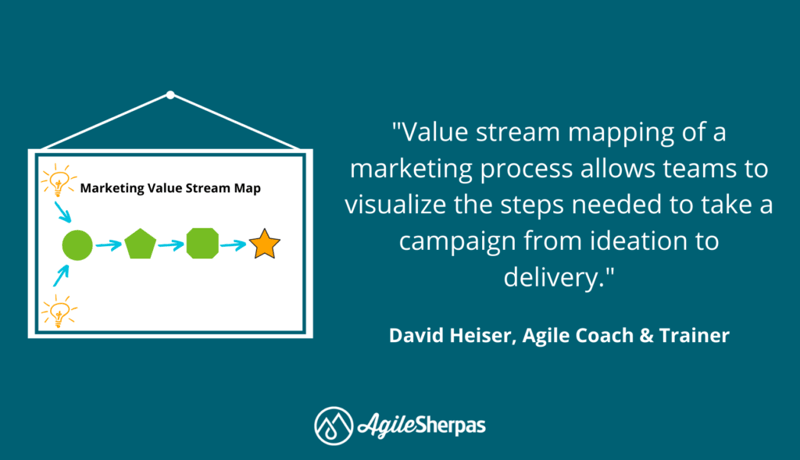-
- marketing agility
- Teams
- Organizations
- Education
- enterprise
- Articles
- Individuals
- Transformation
- Solution
- Leadership
- Getting Started
- business agility
- agile management
- going agile
- Frameworks
- agile mindset
- Agile Marketing Tools
- agile marketing journey
- organizational alignment
- Agile Marketers
- People
- Selection
- (Featured Posts)
- strategy
- agile journey
- Metrics and Data
- Kanban
- Resources
- Why Agile Marketing
- agile project management
- self-managing team
- Meetings
- Scrum
- agile adoption
- scaled agile marketing
- tactics
- scaled agile
- AI
- Agile Meetings
- agile marketing training
- agile takeaways
- Agile Leadership
- agile coach
- enterprise marketing agility
- Scrumban
- state of agile marketing
- team empowerment
- Intermediate
- agile marketing mindset
- agile marketing planning
- agile plan
- Individual
- Team
- Videos
- agile marketing
- kanban board
- Agile Marketing Terms
- agile transformation
- traditional marketing
- FAQ
- agile teams
- Agile Marketing Glossary
- CoE
- Scrumban
- agile
- agile marketer
- agile marketing case study
- agile marketing coaching
- agile marketing leaders
- agile marketing methodologies
- agile marketing metrics
- agile pilot
- agile sales
- agile team
- agile work breakdown
- cycle time
- employee satisfaction
- marketing value stream
- marketing-analytics
- remote teams
- sprints
- throughput
- work breakdown structure
- News
- agile brand
- agile marketing books
- agile marketing pilot
- agile marketing transformation
- agile review process
- agile team charter
- cost of delay
- hybrid framework
- pdca
- remote working
- scrum master
- stable agile teams
- stand ups
- startups
- team charter
- team morale
- user story
- value stream mapping
- visual workflow
The Importance of Value Stream Mapping in a Marketing Team

What are all the steps your team takes to deliver value to the customer in a timely way? Any high-performing Agile marketing team would be able to tell you at the drop of a hat.
Mapping the journey of value-adding team activities, from the customer's perspective, is a crucial practice for Agile marketing teams in particular. It keeps them operating effectively, efficiently, and at top quality, even in the face of a crisis.
Unfortunately, it's also a process practice that's often overlooked.
Part of the problem is that value stream mapping's roots in manufacturing make it seem difficult to apply in other industries. There's also a serious lack of content exploring this practice in the context of knowledge work, which means there are no out-of-the-box guidelines for marketers to use.
That's why when you ask most traditional marketing teams about how value reaches their customers, they'll probably tell you this process lives in their heads. Chances are it also looks different depending on which team members you ask.
To help overcome these hurdles, we're going to cover what value stream mapping is in practice, including what I've seen work over years of collaborating with Agile teams. By the end you should have a much better idea of how to put this crucial practice to work in your own Agile marketing context.
What is a Marketing Value Stream Map?
In general, a value stream map is a visual representation of the flow of goods from supplier to customer through an organization. It displays, using diagrams or other means of visualization, all of the necessary steps to create and deliver value from start to finish.
The practice of mapping value streams is more than 100 years old, with records dating back to a 1918 book called Installing Efficiency Methods, by Charles E. Knoeppel. Still, this practice has yet to find wider adoption in the marketing context.

This practice demands an examination of your internal processes and calls for a more complete understanding of your business. The end goal is to identify where improvements can be made so more value can reach your customers.
Unlike a workflow, the value stream differentiates between value-adding and non-value adding steps. It also calls out the wait time in your process and the accumulated waste it causes so you can highlight opportunities to make things better.
Further, value stream mapping gives all team members insight into how work is getting done. This is especially valuable for individual members of the team, because it allows individual contributors to increase their understand of the stages of the work process of which they were not aware, or in which they have never participated.
How to Build Your First Value Stream Map
To start mapping your marketing process, get your whole team together for a working session (or two) and start by asking several open-ended questions. Be sure to have a whiteboard, flipchart, or an alternative in place to brainstorm together, visually.

Discuss the following questions:
Where do our tasks come from?
Surfacing this question allows you to dig deeper into the source of your team's work and the different ways that it enters your workflow. You'll find that tasks can originate from quite a few places.
These will likely include requests from other teams, internally-generated administrative work, strategic projects etc. As a result of this conversation, you should have a better overview of how work enters your backlog, or how work bypasses the backlog altogether (if that's ever allowed to happen).
What types of tasks do we do?
As a manager, you probably know quite a lot about the different types of work your team tackles through their marketing processes. But, unless you're an ardent micromanager, you'll likely be surprised by some of the things you hear during this phase.
Ask your team to list every type of work that comes into the team, not just campaign work related to strategic initiatives. Nothing is too small to get listed!
This phase can be time consuming, but it's crucial for the team to begin to separate value-adding work from less important activities.
What needs to happen for tasks to be considered complete?
At this stage, you should start to map out "how the sausage is made." If there's a specific process for every type of work your team does, make sure you create a separate path for each.
Be as granular as possible. For example, a typical content marketing value stream would look very similar to this:
Conceptualization --> Review --> Content creation --> Editing --> Design --> Approval --> Promotion
Last but not least, don’t assume that everybody in the room knows how something is executed when it enters the team. Don't hold back, call every process out!
Where does completed work go?
This is among the most important questions on the list.
In addition to mapping your marketing value stream internally, defining stakeholders who receive completed work will shed further light on wasteful activities that the team may not have complete control over.
How long does it take to deliver value (from the moment we start working to the moment we consider something complete)?
This is where the workflow begins to transform into a value stream. Write down how long it takes (on average) to deliver a certain type of work by breaking down its elements and documenting their delivery times.
If you're just building out your first value stream map, you're likely not tracking Agile marketing metrics.
Take some time to discuss how measuring "how long it takes to deliver value" contributes to the collection of valuable data about your process, such as measures of efficiency and throughput.
Before moving on to learn how to make your value stream more efficient, why don't you take a second to grab our Agile Marketing Quick Start Guide?
Making Your Value Stream More Efficient
After capturing your current process state, it's time to start creating your first marketing value stream visualization. Kanban boards or mind maps can be extremely helpful tools to consolidate discussion with your team in the first part of this exercise.
Showcase the visualization and use input from the wider team to identify:
- Silos in the process where there is little information exchange happening to the detriment of the team goals
- Bottlenecks and process wastes
- Parts of the value stream that are entirely within your control
Identifying silos in the value stream
Silos are a common challenge in many companies, especially in enterprise-level organizations.
Organizational silos occur when departments or teams are made up of only groups of people who share a particular expertise. The result is that these groups becomes less likely to share ideas and resources with the wider team.
Further, organizational or departmental silos create strong dependencies among different teams for the delivery of a single project or initiative, because work has to pass through each silo one by one before any value is delivered.
When dependencies occur, managers are expected to act as the bridge between siloed groups that need to work together. When mapping your marketing value stream, identify places where you rely on another team to execute a part of the work. Define:
- Which types of tasks you depend on other teams to complete
- How long it takes (on average) to complete tasks which are dependent on other teams (e.g. 3 days) (start tracking this if you aren't already)
- How long it takes for your internal team to do their bit (e.g. 4 hours) (start tracking this if you aren't already)
If you have to wait 3 days for the team to complete the shared task, but it only takes your internal group 4 hours to complete your bit of the work, find a way to highlight that in the value stream. Visualize the existing dependencies and monitor them meticulously to discover what's affecting your team's overall pace of value delivery.
Consider possible solutions for managing these dependencies more efficiently and make a case to your team and manager.
Identify bottlenecks and process waste
Bottlenecks are parts of your value stream with lower capacity that generate large amounts of wait time.

Bottlenecks are a problem because they increase the time frame between ideation and campaign delivery. No matter how perfect your process is, there will always be at least one bottleneck that drags down the productivity of your team.
When value stream mapping, identify every step, but pay special attention to the areas of the process where your team might be under capacity (ex. under-staffed). Figure out how long your tasks spend waiting on the bottleneck. (Even if it's a guess, it's a great starting point for your first iteration.)
Look into ways of alleviating process bottlenecks and test what is applicable to your specific case.
Gather feedback and take action
Improving your value stream map is a journey. Publish your first iteration on something like Confluence or SharePoint and share the discussion with your team and appropriate stakeholders.
Collect comments and feedback to improve the pace, quality, and stability of your value stream.
In some cases, you might need support from leaders who can help you optimize the areas outside of your control, or alleviate your bottleneck. For example, getting permission and resources to make a new hire in the team might be a way to improve cycle times of certain types of mission-critical tasks.
Whatever you do to make your marketing value stream more efficient and consistent, keep in mind that the value stream map is something that should be updated continuously, not forgotten about.
Value Stream Mapping Rules
To build an accurate value stream map of your marketing process and make the most of it afterward, I’ve identified some qualitative best practices you and your team might consider taking under advisement.
Be honest with yourself and your team
Don't create a value stream of how you wish your team operated. Show the state of your process as it is now, flaws and all.
No team is perfect and EVERY TEAM has inefficiencies to iron out.
Be transparent with others
Share your value stream with stakeholders and relevant collaborators. If you don't share, then your leaders and stakeholders can't help you remove the waste you're struggling with. The same goes for the waste that's outside of your control to remove or reduce.
Don't leave anything out
When creating a marketing value stream, you need to capture the whole ecosystem that interacts with your team. Don't just focus on how work gets done within the team. Investigate the other parts of the process as well.
Everything needs to be visualized if you're going to tackle process wastes. Remember, out of sight means out of mind.
Take ownership
Your value stream will and should look different than that of any other team. But, it should be clear enough that you could pull someone off the street and they would be able to make sense of it.
Use simple language, make legends, use color codes, and if you use a term that only your current set of team members recognizes, define it on the value stream map.
Make sure everyone on the team participates and has a say
This isn't just an exercise for the Marketing Owner or the Scrum Master. The whole team must participate in the process of mapping your marketing value stream. If you're not including everyone's perspective, then you can be certain that steps will be left out.
Take a step back
Most of us are used to putting big projects together and tackling all the impediments that get thrown our way. The value stream mapping exercise is one of focus and zeroing in on future and past impediments instead of getting caught off guard in the moment.
Set yourself up for success by taking a step back and looking at your value stream critically in order to continually make improvements with your team. Look at one impediment at a time, and have the whole team focus on making slight changes.

Test things out
If you have a hypothesis that would improve the efficiency of some part of your process, then try it out. If it doesn't work, you can always go back to how you were doing it originally.
This is another way to get into the Agile mindset and stop trying to put together the perfect plan from the outset.
You either succeed or you learn. Remember, small adjustments matter!
Keep versions of your value stream on archive
Keeping all versions of your value stream will help you see how far you've come after you've made a bunch of changes. It also lets other teams learn from the improvements you've made (silos be gone!). I encourage you to share progress with other teams to show your successes and inspire them to learn from you and try new things out.
Reviewing the Value Stream on a Regular Basis
Just like your team's Agile journey, the marketing value stream is never complete.
This is a living document.
To keep it up to date, set a cadence to review and update your marketing value stream. In case you’re wondering what the perfect review cadence might look like, the truth is - there isn’t one. You can iterate as often as you find it necessary to keep it up to date, so test what works for you and continue to strive for perfection with your team.
Before you move on , why don't you take a second and get our Agile Marketing Quick Start Guide?
Topics discussed
Improve your Marketing Ops every week
Subscribe to our blog to get insights sent directly to your inbox.



